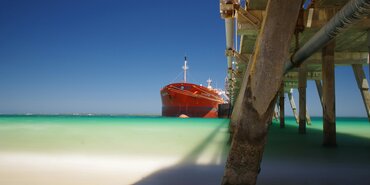Container weighing
With effect from the 1st July 2016 the IMO have put in place an amendment to the Safety of Life at Sea Convention (SOLAS) which will require that all containers loaded onto a ship for export have a verified gross mass (VGM).
This amendment restates and clarifies the shipper’s existing responsibility to provide accurate cargo information, specifically in relation to the weight of containers being loaded. Therefore, shippers, freight forwarders, ship operators and terminal operators will all need to implement procedures to ensure they are prepared for this regulatory change.
The basic requirement:
Before a packed container is loaded the gross mass will need to be obtained and communicated. Where SOLAS applies it is a violation to load a container without VGM. There are two methods of weighing, permissible under the SOLAS amendment: 1) weighing the container once packed, or 2) weighing all the contents and then adding those masses to the container’s tare mass as shown on the door end of the container.
A carrier can rely on the shipper’s signed VGM document and does not need to check themselves. However, the shipper’s VGM declaration must be signed by an individual representing the shipper. If the shipper has failed to provide VGM, this can potentially be resolved at the load port, providing the marine terminal has the necessary equipment and processes in place.
Not permitted – estimating the weight. It is the shippers’ responsibility to obtaining the VGM of the packed container by the use of calibrated and certified weighing equipment, and cannot use a “said to weigh” method.
Further information can be found here on the TT Club website: http://www.ttclub.com/loss-prevention/publications/container-weighing/
- Date
- 05/04/2016





